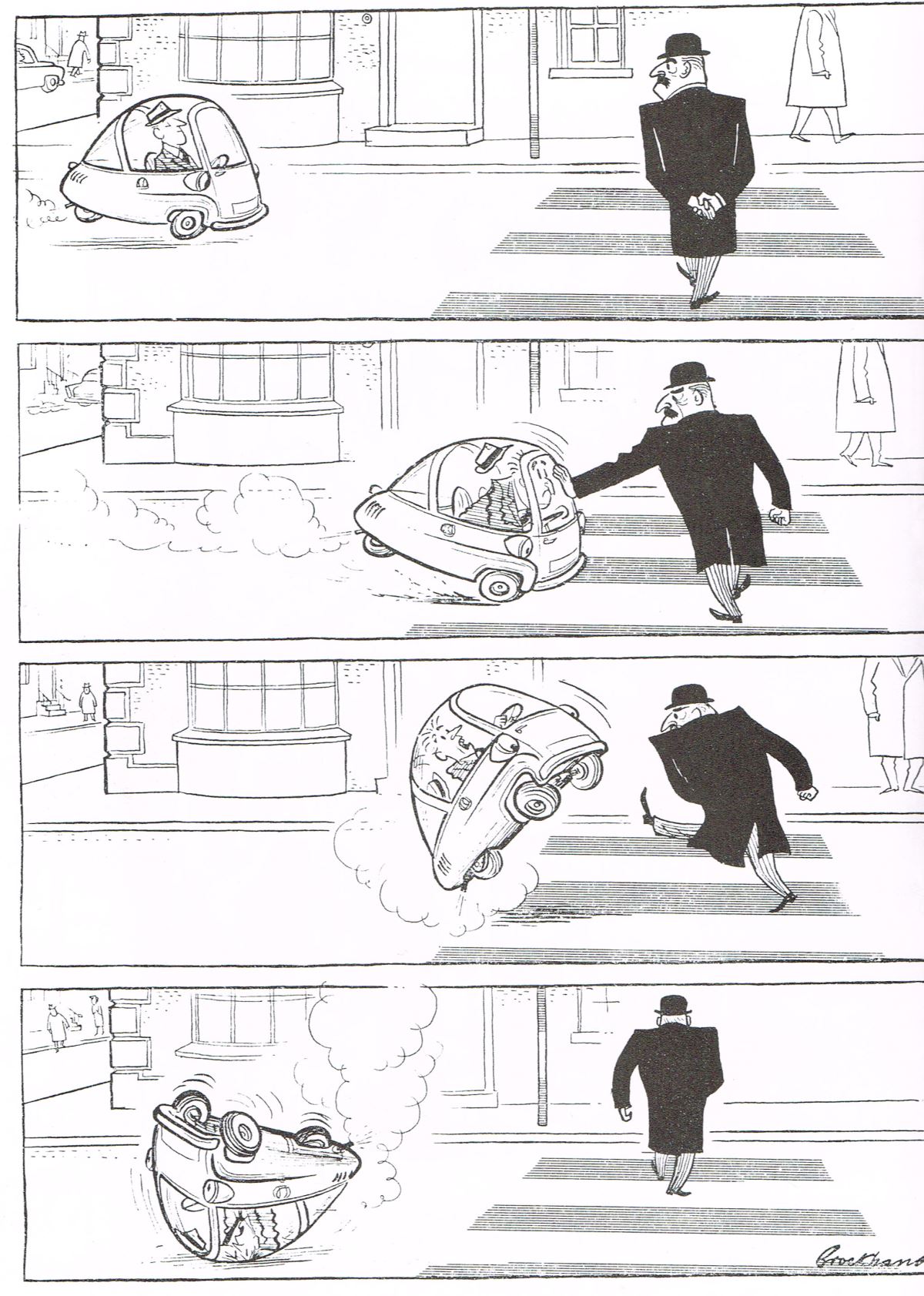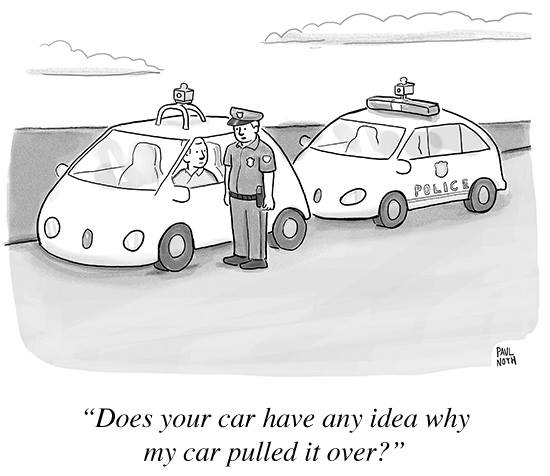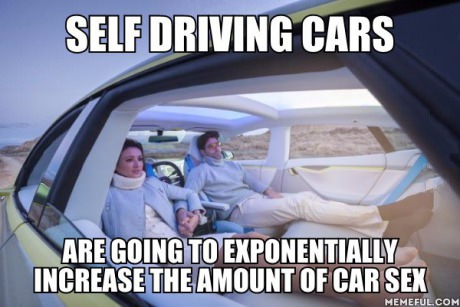The Objections
-

Trivial - What If Cars Abused?
-
Simple answer is they are not likely to be abused. All users will be known, because you will need a charge card of some sort to pay for it.
If you call a car and it's been damaged or left dirty or fouled in any way, you'll just send it off to maintenance depot. The previous user will be billed and/or sanctioned, for the repairs or cleaning.Can we keep a nuke from being smuggled into a city in one of these vehicles?
-
Can a nuke be smuggled into a city using a conventional vehicle today?
So why does an automated car change the situation?
In fact, these cars will be monitored far more intensively than today's vehicles.
I WANT the joy of driving. I happen to like it.... a lot.
-
In fact, 99% of trips are NOT enjoyable driving - commuting or taking kids to school etc.
Being able to do something else while travelling will be the main attraction for drivers.
If you want recreational driving, consider the example of 100 or so years ago when horses were pushed off the streets - now you either go to watch them race, or to go to private pony clubs etc.
They will be expensive beyond belief
-
Expensive now, but will be cheap in near future. At the moment main cost is computers and sensors, both of which will obviously come down in price along the lines of Moore's Law.
(Most of) the cars themselves will be very cheap and basic - basically glorified golf carts because won't need all the crash protection built into today's cars.
Taxes will go up since towns will lose traffic ticket revenue.
-
But the big reason why govts are so keen on this is because costs will go down.
The reduction in car accidents will save a fortune in hospital and welfare costs.
They will then have a choice whether to cut taxes or fund other projects.
Regulations and Insurance Issues
-
... can't answer questions on how a driverless car will cope in crash situations where the only possible outcomes result in the death of a human. No-one has been able to clarify how insurance companies will deal with liability.
You seem to be arguing that because there are unresolved issues, that that means they will never be resolved.
We can predict that the technical issues will be solved. It is a matter of improving equipment - nothing new has to be invented.
Bear in mind that just 12 years ago these cars were impossible - they existed only in science fiction.
And as for the legal and insurance issues - both govts and insurers can foresee huge savings so they are strongly motivated. to establish a favorable regulatory environment.
People Are Already A Problem
-
(LT 11 April 2015)
Children walking on motorways or Aroads cause emergency lane closures at least twice a week on average.
There were 122 incidents last year in which “unsupervised children” were listed as the cause of lane closures on major roads.
There were also 3,990 lane closures caused by animals loose on the network, according to figures from Highways England obtained by the Institute of Advanced Motorists (IAM).
In total there were 443,590 lane closures on motorways and primary Aroads in England last year. The IAM said this cost the economy more than £1 billion in lost working time because people were stuck in traffic queues.
Almost 13,000 of the incidents were caused by pedestrians walking on a motorway or A road. Another 5,700 closures were caused by potholes.
There were 152 closures caused by objects being thrown on to the roads and 567 resulting from a vehicle being driven on the wrong side of the road. More than 2,500 closures were caused by abandoned vehicles and 6,700 by shed tyres.
There were also 856 suicides or attempted suicides that caused roads to be shut on England’s main routes.
Vehicle breakdowns were the most common cause, accounting for 185,000 of the closures, followed by roadworks at 62,000.
Sarah Sillars, the IAM’s chief executive, said: “People are putting their own lives at risk and those of others by not maintaining their vehicles properly to the point they break down on our busiest roads. While we appreciate that a few breakdowns are unavoidable, such as a tyre blow out, the vast majority can be avoided or dealt with before taking a vehicle on to a key route.
“[The figures] also show people do not treat our key economic arteries with the respect they deserve.
“Pedestrians, unsupervised children and objects thrown on the road should never be happening. It is clear an education and awareness campaign starting at school age is badly needed.”
One solution is the complete separation of roads from pedestrian traffic with fences or barriers.
-
Google's self-driving cars are very, very polite — “They’re never the first off the line at a stop light, they don’t accelerate quickly, they don’t change lanes, and they don’t speed” — but since they don't behave like those piloted by regular human drivers, that can be a problem for the non-Google cars on the road. Which is to say almost all of them.
Observing that, a police officer in Mountain View, California, pulled over one of the autonomous vehicles not far away from the Google campus for being too pokey. According to the Mountain View Police Department, “the officer stopped the car and made contact with the operator to learn more about how the car was choosing speeds along certain roadways and to educate the operators about impeding traffic.”
 In a post on Google Plus, the driverless-car team poked fun at the incident: “Driving too slowly? Bet humans don’t get pulled over for that too often.”
In a post on Google Plus, the driverless-car team poked fun at the incident: “Driving too slowly? Bet humans don’t get pulled over for that too often.”
The post goes on to say that engineers at Google have capped the speed of their prototype driverless cars at 25 mph for safety purposes (the reasoning behind this is very likely to be the same as the city’s rationale for lowering the speed limit in Manhattan last year).
Because the technology behind Google’s driverless cars is still experimental, they are registered in the same class as golf carts and allowed to go as slowly as they want on public roads. The car was let go with a stern, mildly confused warning and allowed to drive itself home. -
-
Can a nuke be smuggled into a city using a conventional vehicle today?
